Anthocyanin, which can appear on a number of different leaf shapes, involves a blue/purple pigment on the epidermis of the fruit. The gene responsible for that expression was the “Aft” gene (anthocyanin fruit). Anthocyanin can also be found in plant foliage and stems, but it is controlled and expressed by another recessive anthocyanin gene called atroviolaceum or “atv” which expresses in the plant body as well as sometimes in the fruit. Most of the “atv” expressions we see in today’s modern tomatoes relate back to the wild species Solanum Cheesmaniae.
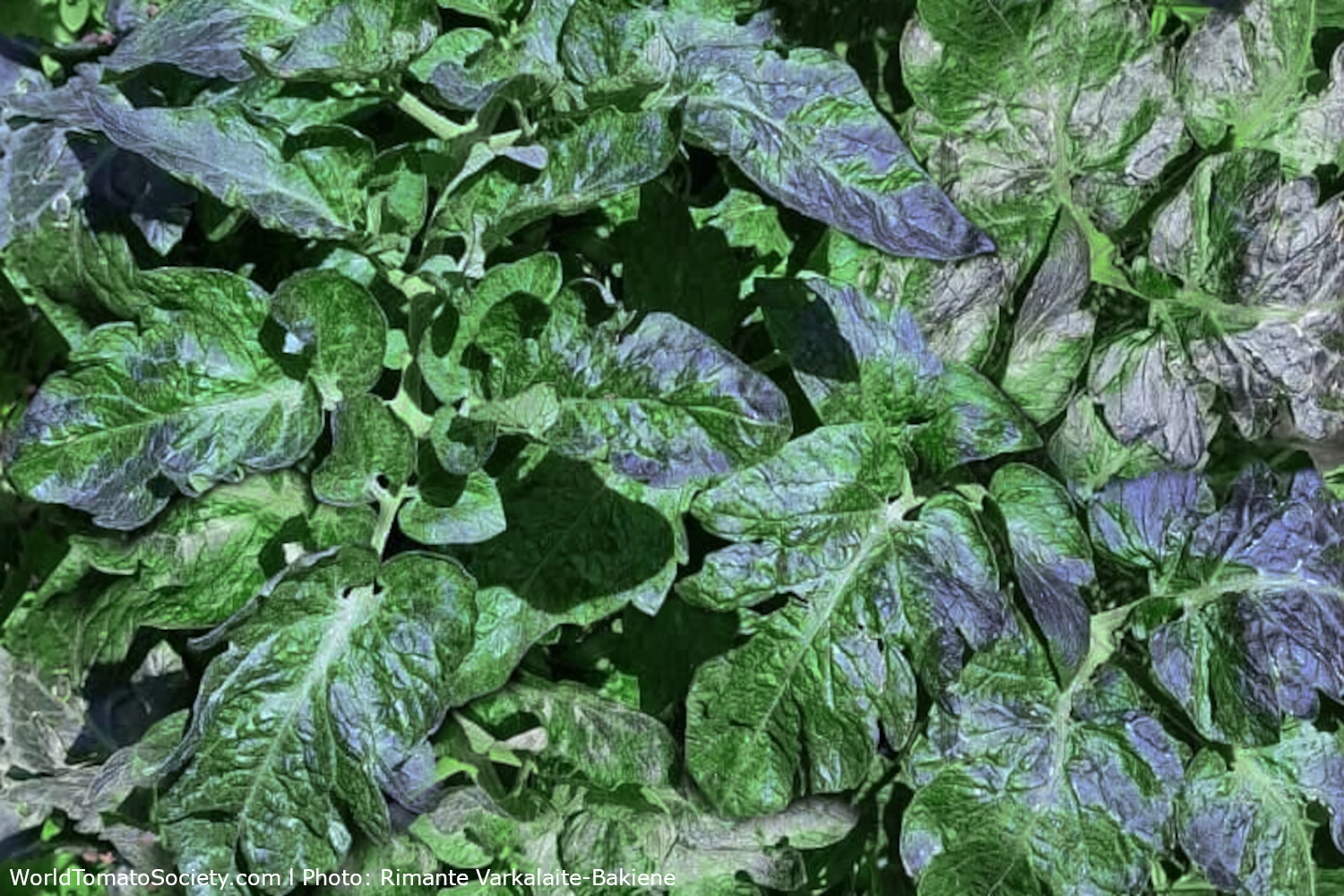
This pigment will appear soon after the seedling develops its first true leaves and will typically stay with the plant until it is planted out in the final growing spot. Then as seasonal temperatures begin to climb, the heat can make it fade or disappear for some time. It is controlled not only by sun exposure but also by temperature. As you move into cooler early fall weather, you will see the atv return to the foliage, some can turn almost black.
This expression can be very hard to capture or judge the exposure rate because it is so highly affected by temperature changes. Some will confuse this with the normal purpling of the leaves and stems that a non-atv plant will exhibit under cooler conditions. This effect happens due to a phosphorus mobility issue and has nothing to do with the atv gene. In the photo, you can see a variety called “Dream Weaver”, which is a regular leaf atv expression.
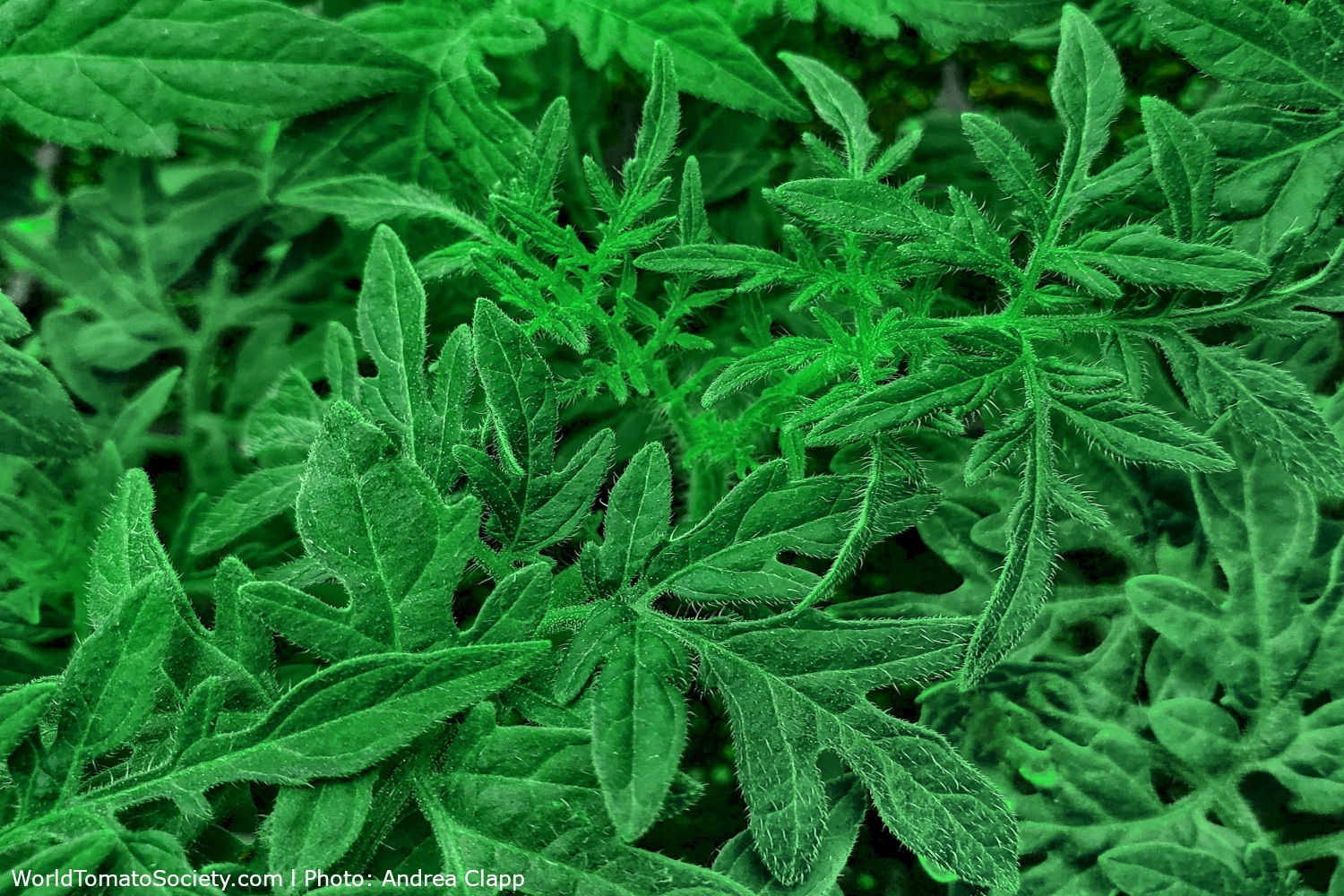
Carrot leaves have their own distinctive leaf that appears very cut and serrated, much like the leaves of a carrot plant, for which it gets its name. The lacy-looking leaves tend to drape from the plant in a semi-wispy form. This type of leaf is sometimes confused with wispy leaf because they have similar habits – both are very dainty, graceful-looking plants with a flowing graceful habit. There are only a small handful of varieties that have carrot types of leaf, such as Silvery Fir Tree and Lucinda.
Chartreuse leaves are one of the rarest color types of leaves there are, and they can sometimes be confused with a sickly plant or one that’s in desperate need of some fertilizer. They exhibit a pale yellow-green color due to overall low chlorophyll production across the entire plant, controlled by the recessive lutescent (l) gene or one of its several alleles. Because there are so many genetic variances, plants can present larger or smaller percentages of chlorophyll loss, which makes some appear “brighter” yellow or just slightly lighter in shade than the average tomato leaf pigment. This color type can
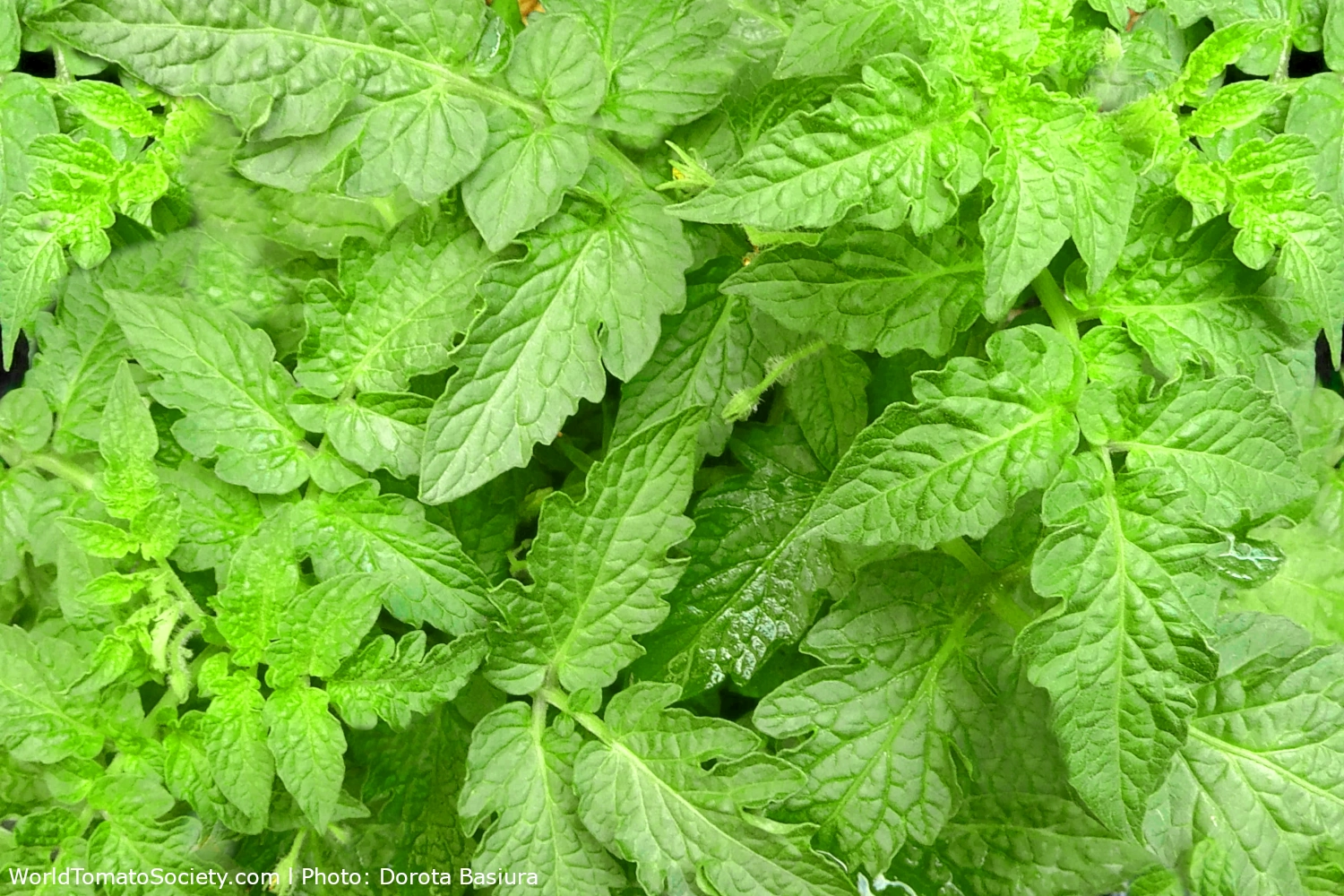
come in any of the different leaf shapes, from regular to potato leaf to wispy. Some varieties that display this electric green coloring include Livingston’s Honor Bright, Lutescent, many of the Cherokee Tiger series, and Long Tall Sally, which has some Cherokee Tiger genetics in its pedigree. Another gene called the Galapagos gene (glg) is recessive and causes a light green color—not quite chartreuse green, but a pale dull green. This is found in the wild-type Solanum cheesmaniae.
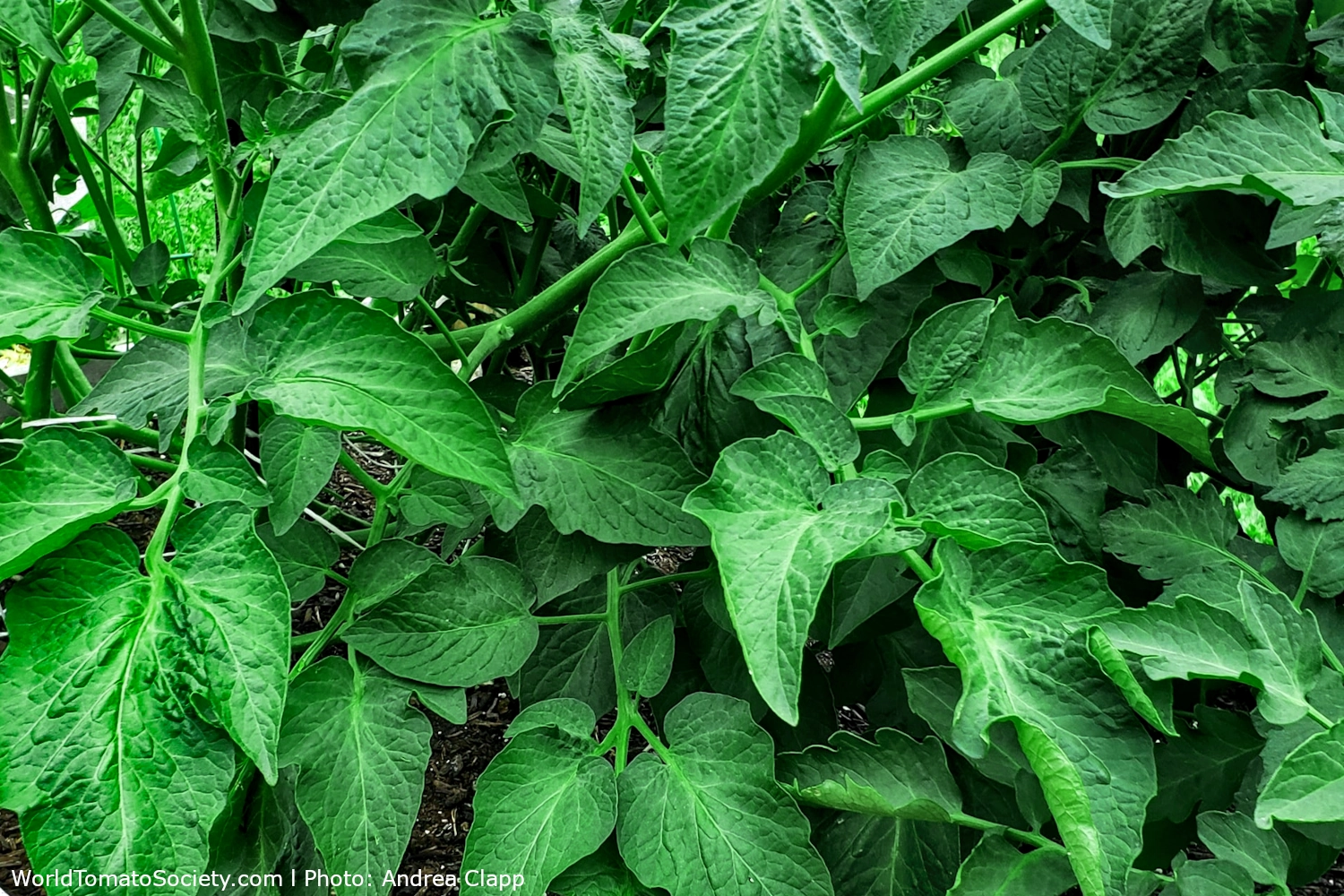
One of the most common types of tomato leaf is potato leaf (c), which is a recessive trait. This type of trait was named so because the leaves actually do resemble the look of a potato leaf, having smooth, round edges. Some will be perfectly smooth, and some will have “mittens,” or extra side growths that are also smooth. This type is said to require less water and can offer a little added protection to the fruits from damaging elements such as sun exposure and disease because of the sheer size and cover of the leaf structure.
The most common leaf type is the regular leaf, or cut leaf (C), which has large serrations in the leaf’s edges. These develop on all sorts of heirlooms and even newly created varieties. This is a dominant trait, meaning that when crossed with a recessive trait, these will be the first leaf type to show in an F1 hybrid.
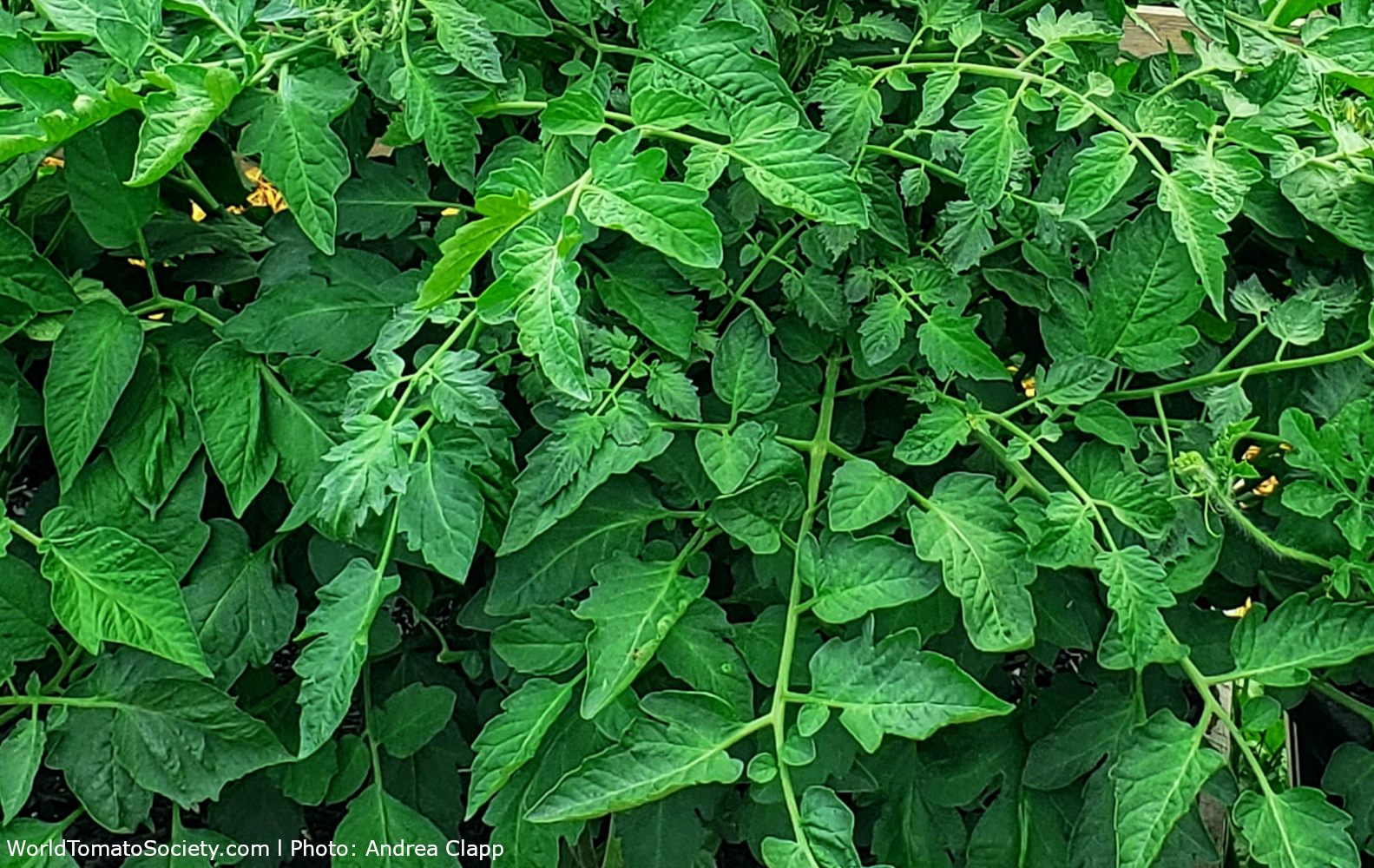
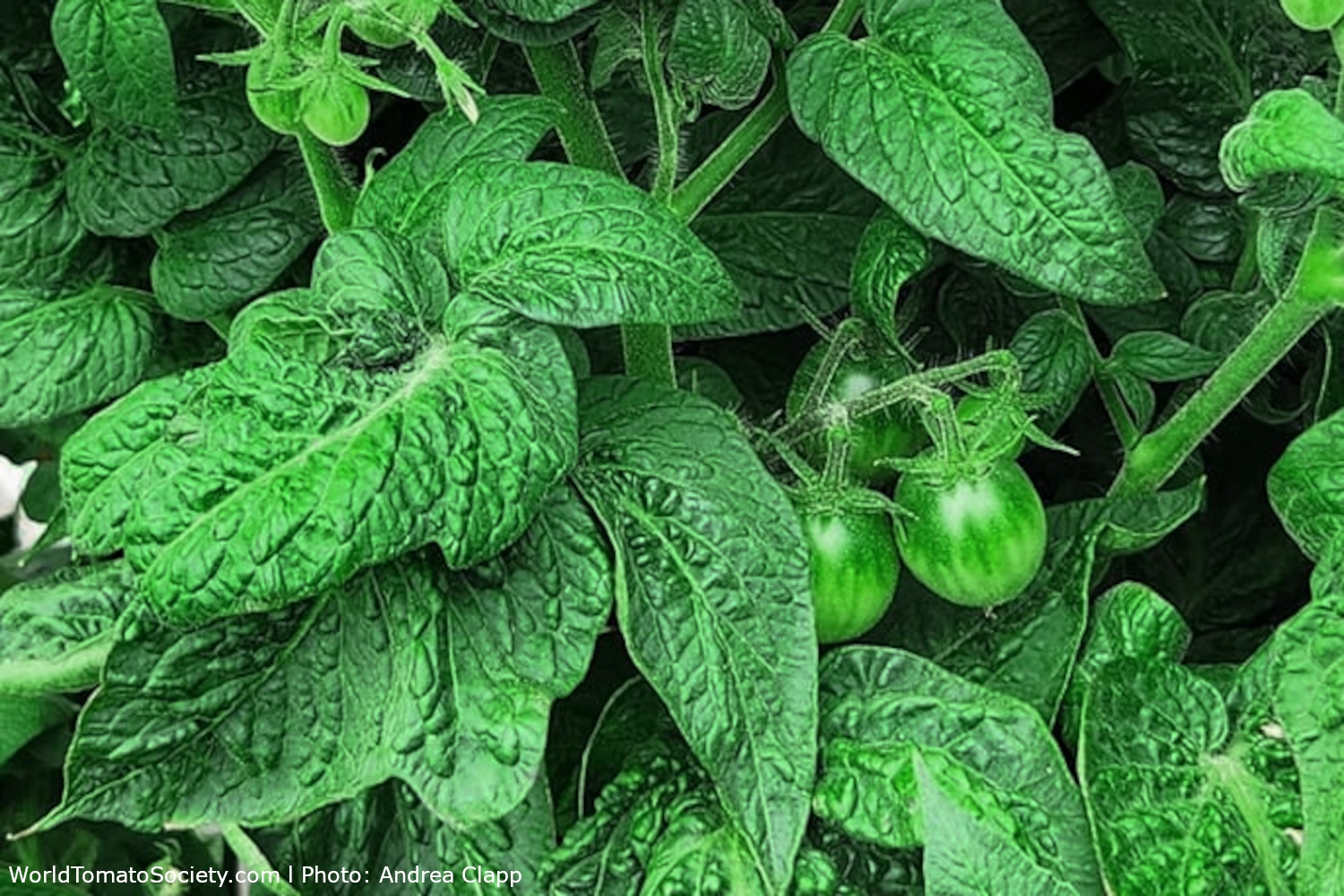
Both – regular and potato leaf types – come in a rugose habit, which provides the same general shapes but exhibits thicker, crunchier leaves, like those of winter spinach. Rugose leaves are found only on dwarf-type plants, which are sturdy and more bush-like.
The serrated potato leaf has the full roundness of a potato leaf with slight serrations along the outer edge, exhibiting no sections or interior cuts like a regular leaf could. Smaller secondary leaflets along the stem may either show as smooth potato leaves or be completely absent. This type of leaf has recently been found to offer some resistance to certain diseases, but the reason is yet unknown.
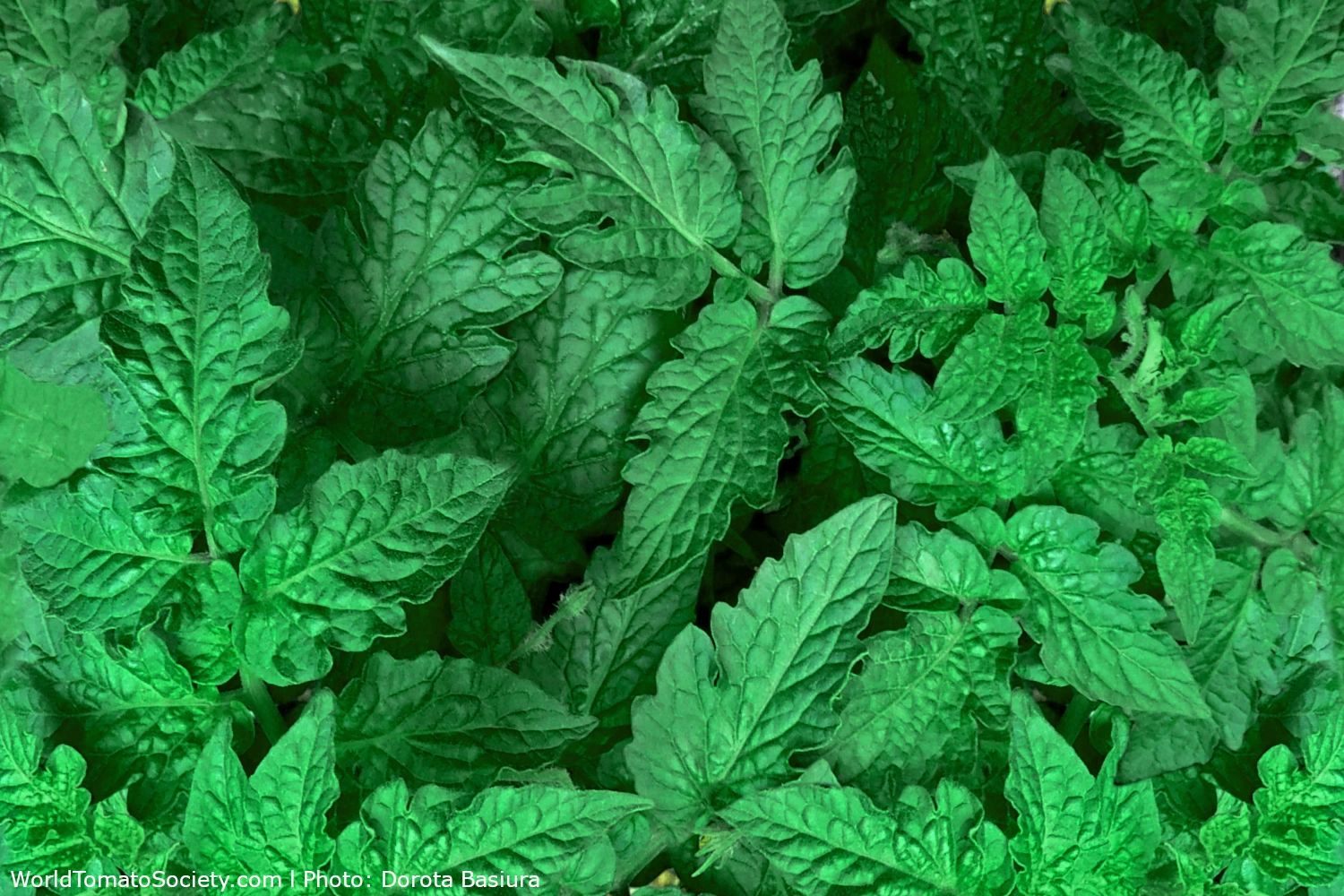
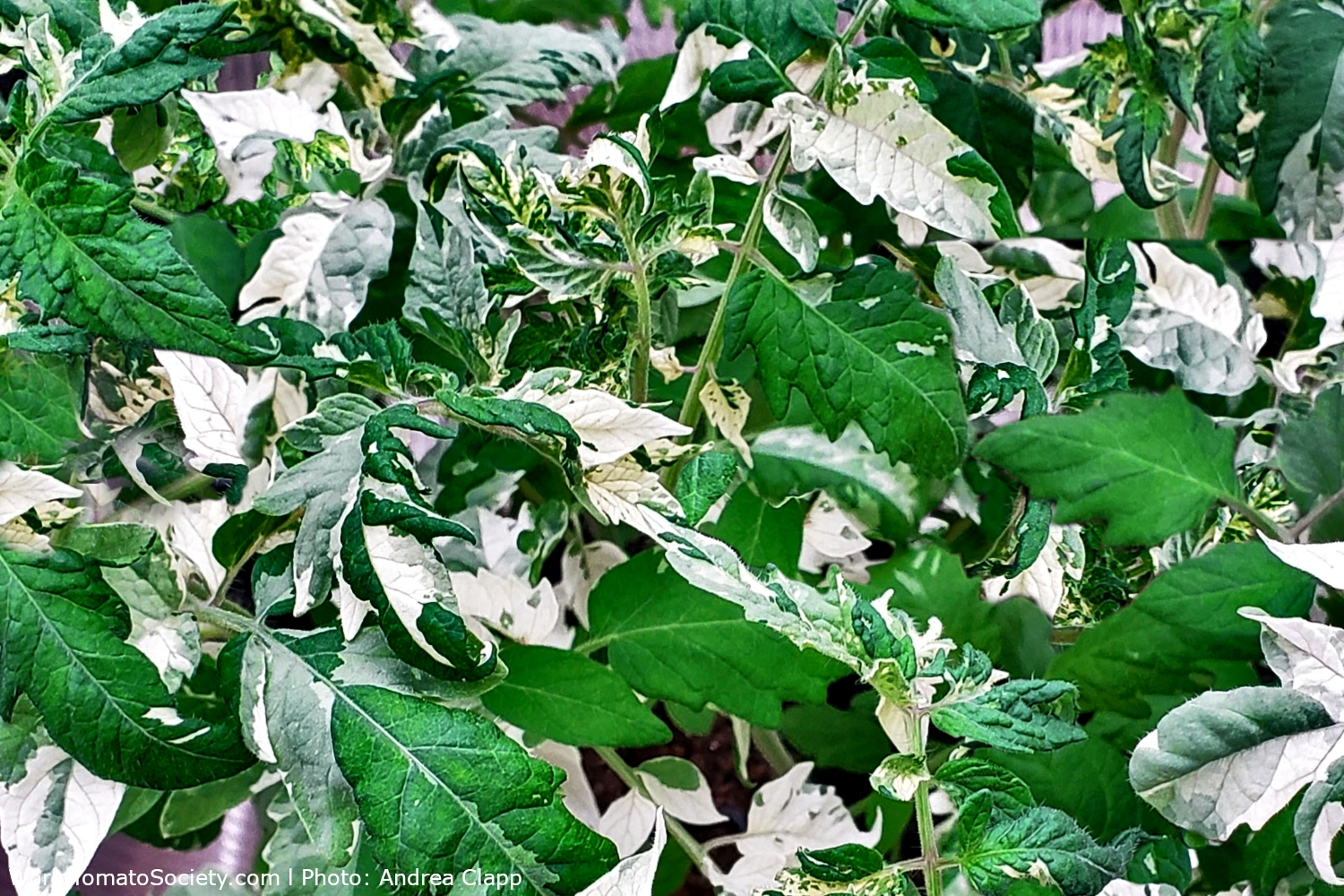
The variegated leaf is one that has some known genetic findings as well as some mysteries left for us to discover. The main gene associated with variegated leaves is the albescent (alb) gene, which is another recessive type of gene, and the ghost (gh) gene, which is still in the discovery stages. Like the chartreuse/lutescent gene, the albescent and ghost genes also have some control over the amount of chlorophyll within the stems, leaves, and sepals. The difference here is that the albescent and ghost genes express the lack of chlorophyll in a streaking, flecked, or splattered type of pattern, interspersed
with different percentages of chlorophyll (green). As mentioned above, not everything is known about this leaf coloring, but in most cases, the percentage of the white seems to decrease when exposed to higher temperatures and increase as the season cools back down again in the fall, especially in relation to the albescent gene. There are just a handful of variegated varieties on the market today, some of them are Splash of Cream, Faelen’s First Snow, Potato Leaf Variegated, Karson’s First, and Painted Lady. In the photo, you can see a leaf of Moonlight Mile – a regular leaf variegated plant that bears purple-striped fruit and Variegated Potato Leaf – a yellow, round cherry tomato.
The wispy or wilty leaf habit is very flowing, with elongated branching and fine, regular-cut leaves. This comes from a recessive wilty (w) gene that is in some way related to heart- and plum-shaped fruiting patterns, meaning that in general – but not always – plants with this type of leaf will produce heart- or plum-shaped fruits. This type of leaf is sometimes confused with the carrot/fern leaf type because they have similar habits – both are very dainty, graceful-looking plants with a flowing graceful habit. Some varietal examples of the wispy type are Kosovo, Sgt. Pepper’s, Purple Russian, and Long Tall Sally.
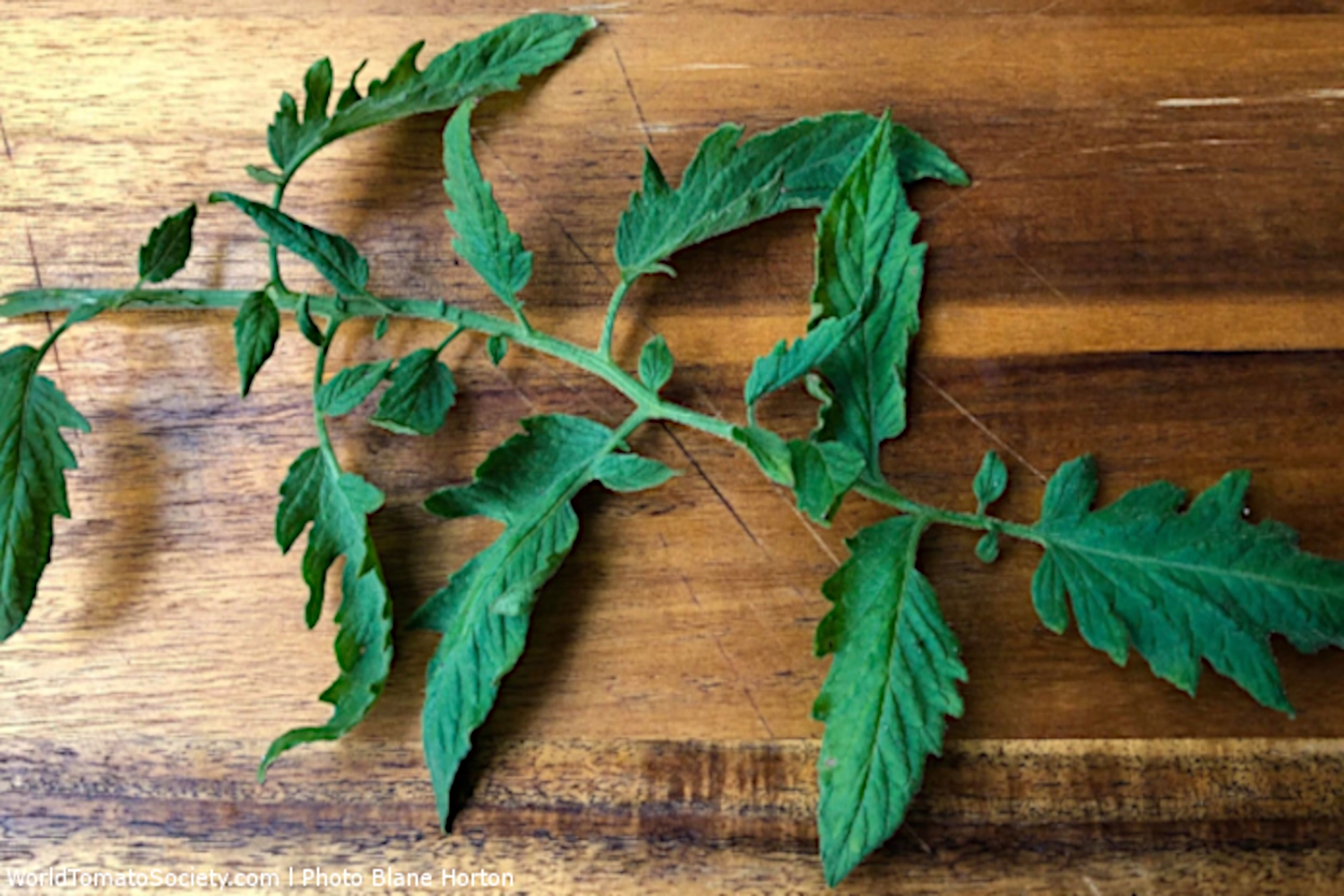
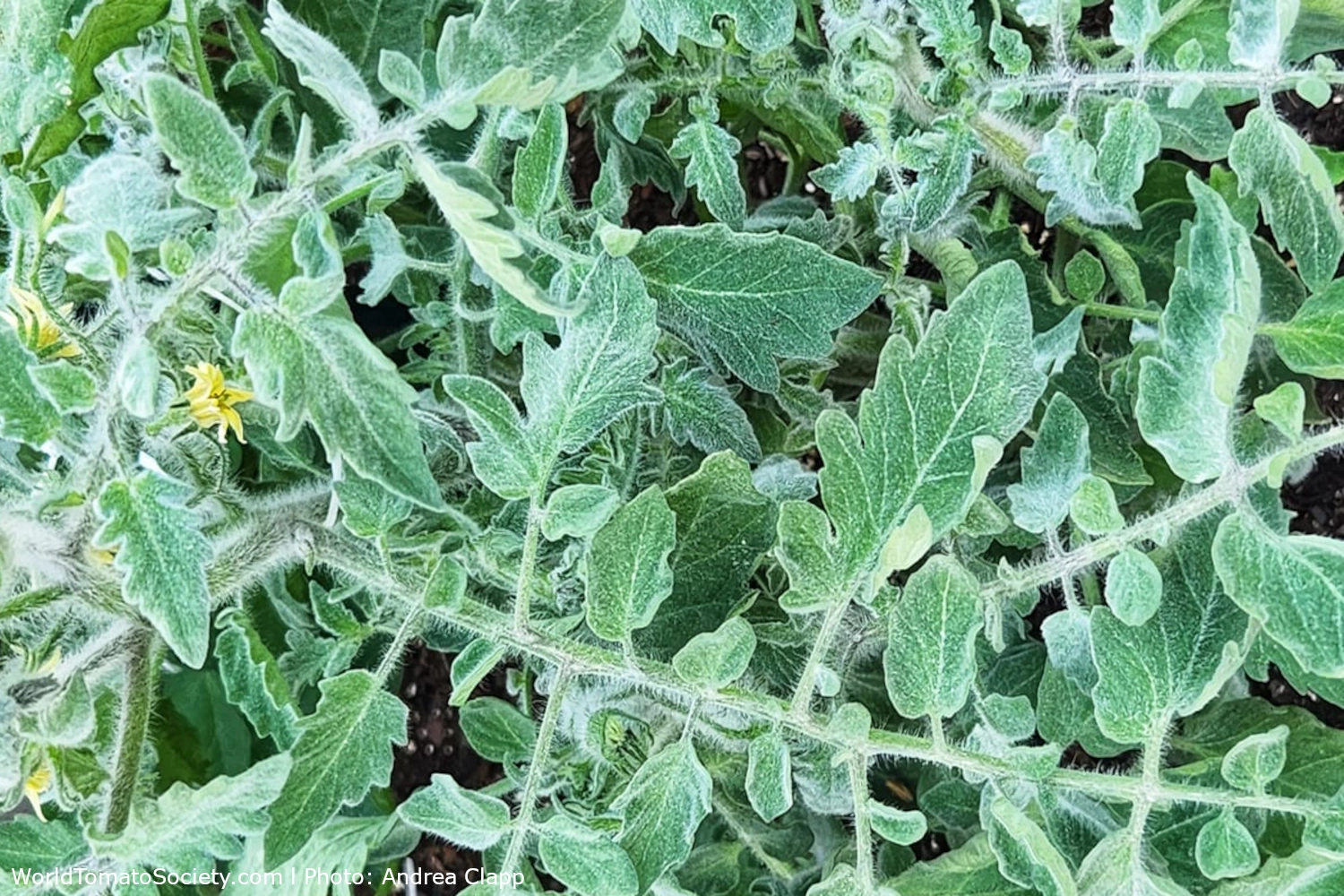
Another interesting type of tomato foliage to look at is the woolly or angora type. Just as it sounds, this type of leaf is fuzzy and soft with a bluish tint, sort of like a lamb’s ear plant. The trichomes (tiny hairlike extensions) are thicker and in much greater numbers along all the vegetative surfaces of a woolly-leaf tomato. In some instances, the fruits can even be fuzzy, almost like peach skin. It is controlled by the spontaneous dominant mutant woolly (Wo) gene. There are several different genetic combinations of this gene that can make